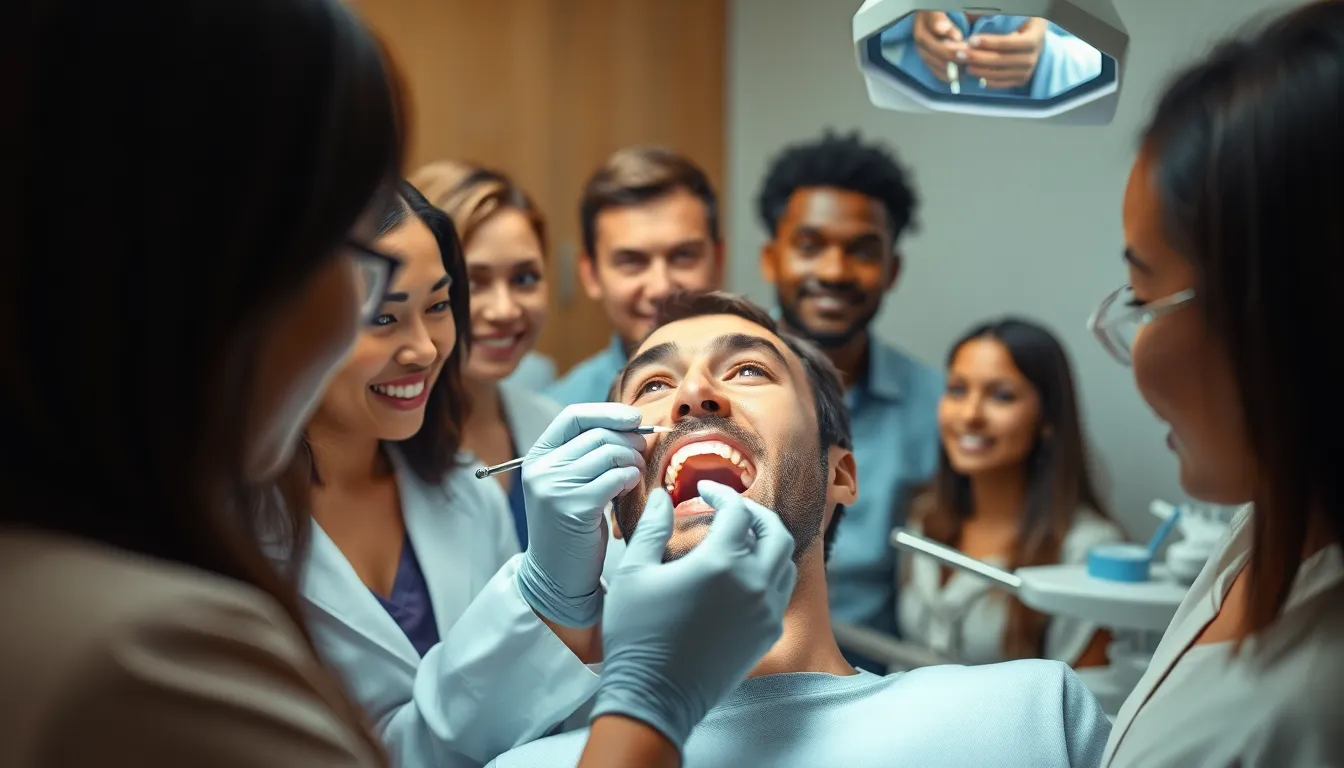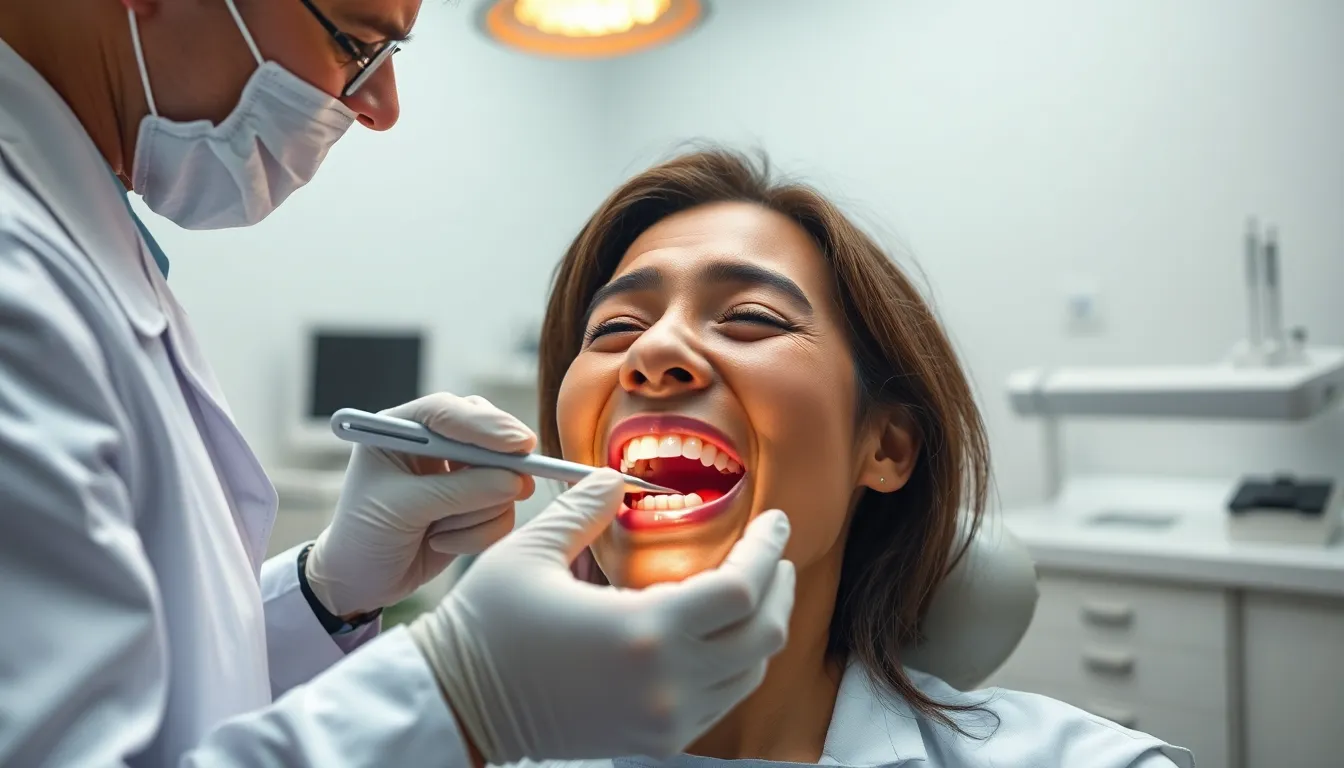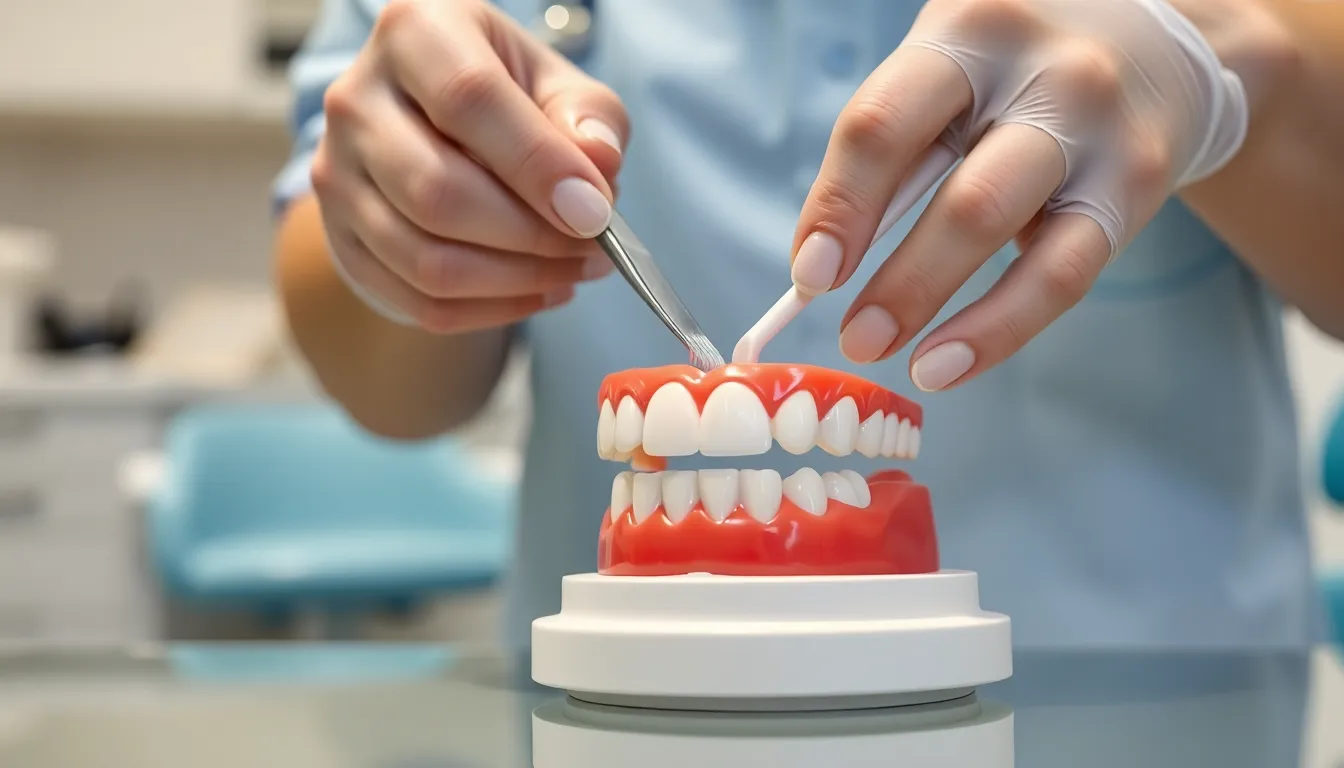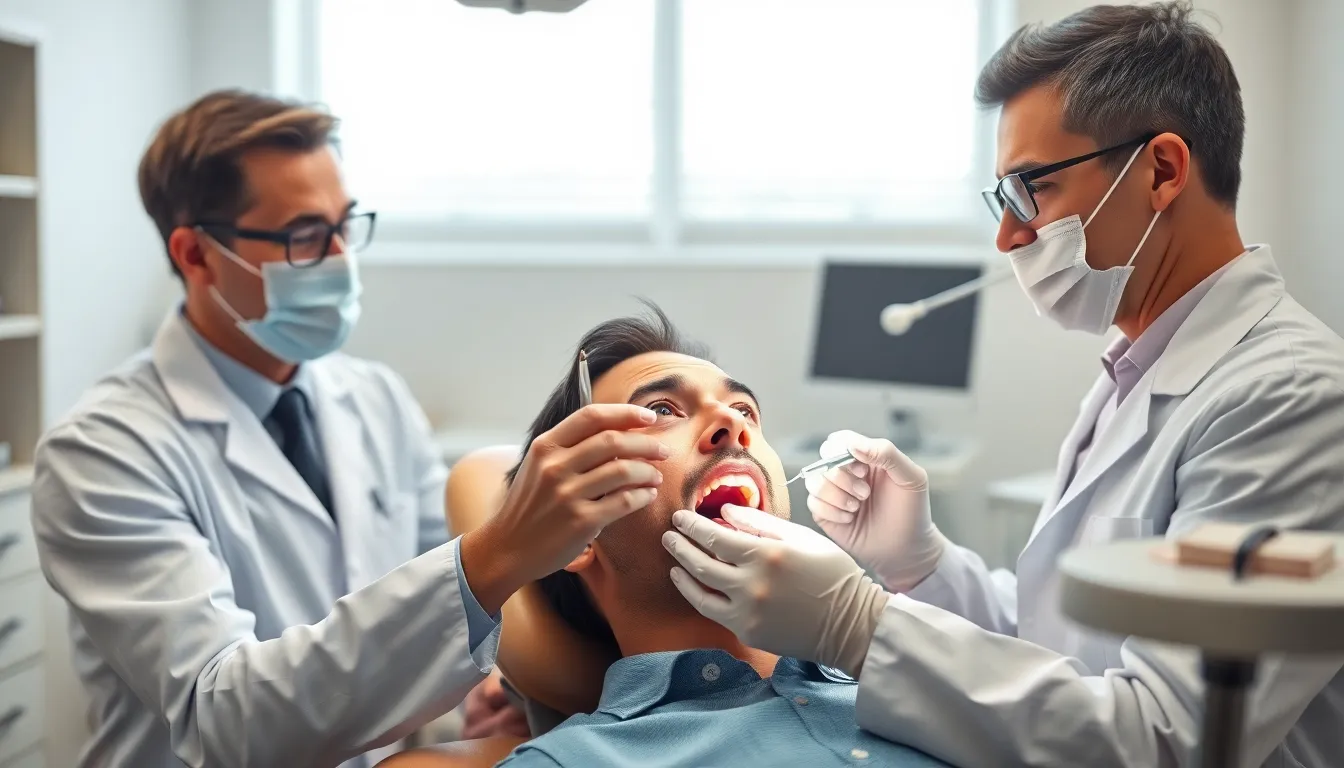Are you experiencing temporary bridge pain after your dental procedure? You’re not alone. This common discomfort affects many patients who have recently received dental bridges, but the good news is that it’s typically short-lived.
When a dental bridge is placed, your mouth needs time to adjust to this new addition. The surrounding tissues may become irritated, and your bite might feel different than before. While some discomfort is normal during the adjustment period, understanding the difference between expected soreness and signs of complications can help you determine when to contact your dentist.
What Is a Temporary Dental Bridge?
A temporary dental bridge serves as an interim solution while your permanent bridge is being fabricated in a dental laboratory. It’s designed to protect your prepared teeth and maintain spacing between them during the waiting period, which typically ranges from two to three weeks.
Purpose and Construction of Temporary Bridges
Temporary bridges protect exposed tooth surfaces after they’ve been prepared for permanent restoration. They’re constructed from acrylic or composite materials in your dentist’s office immediately following tooth preparation. These bridges prevent sensitivity, maintain proper spacing between adjacent teeth, and allow for normal eating and speaking while your permanent bridge is being created. The fabrication process involves taking impressions of your prepared teeth, creating a model, and forming the temporary bridge directly in your mouth for a custom fit.
Dr. Harris often tells patients, “I remember when Mrs. Johnson came in for her bridge preparation. She was concerned about how she’d look and function during the two-week waiting period. After receiving her temporary bridge, she was pleasantly surprised by how natural it felt and looked, allowing her to attend her daughter’s wedding with confidence.”
How Long Temporary Bridges Typically Last
Temporary bridges are designed to last 2-3 weeks while your permanent restoration is being crafted. The materials used are less durable than those in permanent bridges, making them suitable only for short-term use. Temporary cement secures these bridges to your teeth, allowing for easy removal when it’s time to place your permanent bridge. These bridges maintain functionality but aren’t intended for extended use beyond a month due to their limited durability and potential for breakage. Regular dental hygiene practices help preserve your temporary bridge during its limited lifespan, though modifications to your cleaning routine may be necessary to avoid dislodging it.
Common Causes of Temporary Bridge Pain

Temporary bridge pain stems from several identifiable sources that affect many dental patients. Understanding these causes helps you manage discomfort and recognize when to contact your dentist for additional care.
Normal Post-Procedure Discomfort
Post-procedure discomfort represents the most common cause of temporary bridge pain. After placement, it’s perfectly normal to experience mild pain, sensitivity to temperature changes, and some swelling around the abutment teeth and gums. Your mouth needs time to adjust to the new dental appliance, which creates this initial discomfort. Typically, these symptoms gradually diminish within the first few days as healing progresses. Many patients report that over-the-counter pain medications effectively manage this type of temporary pain.
Dr. Harris often tells patients about Sarah, who called his office panicking about sensitivity after her temporary bridge placement. “I reassured her that what she was experiencing was completely normal and part of the healing process. By day three, her discomfort had subsided significantly, and she was much more comfortable with her temporary restoration.”
Improper Fit or Alignment
An improperly fitted temporary bridge creates uneven pressure distribution across your teeth. This misalignment causes localized pain, increased sensitivity when chewing, and potential bite problems that make eating uncomfortable. Your bite might feel “off” or you may notice that certain teeth make contact before others when you close your mouth. Poorly aligned bridges also risk accelerated wear on both the temporary restoration and adjacent teeth. Dental professionals can usually address these issues with simple adjustments during a quick follow-up appointment.
Infection Around the Bridge
Infections developing around temporary bridges demand immediate attention from your dentist. During the placement procedure, gum tissue may become irritated or bacteria might get trapped beneath the bridge, leading to inflammation or infection. Signs of infection include persistent throbbing pain that doesn’t respond to pain medication, noticeable swelling, redness in the gum tissue, and occasionally pus formation. Prompt treatment prevents complications and protects both your temporary bridge and underlying tooth structure. Regular gentle cleaning around the bridge area helps minimize infection risk, though some cases require professional intervention with antibiotics or drainage.
Types of Pain Associated With Temporary Bridges

Temporary dental bridges often cause exact types of discomfort as your mouth adjusts to this new appliance. These pain patterns can range from mild sensitivity to more concerning symptoms that might indicate complications with fit, hygiene, or underlying dental conditions.
Sensitivity to Hot and Cold
Temperature sensitivity commonly occurs because your natural teeth supporting the temporary bridge have undergone enamel removal during preparation. This preparation process exposes the dentin and nerve endings beneath, making your teeth react more intensely to hot beverages or cold foods. Your sensitivity might feel sharp or sudden when consuming temperature extremes but typically diminishes as your teeth adjust to their new environment. Dr. Todd B. Harris notes, “Many of my patients report that their sensitivity peaks around day two or three after placement, then gradually subsides over the following week.”
Pain When Chewing
Discomfort during biting or chewing frequently results from an improperly fitted temporary bridge creating uneven pressure distribution. Your bridge might feel too tight, sit too high, or be misaligned, causing your teeth to rub uncomfortably or shift when you eat. Teeth grinding can significantly worsen this type of pain by placing additional stress on both the temporary restoration and surrounding tissues. One patient shared, “I couldn’t eat on my right side for days until my dentist adjusted my temporary bridge—it felt like something was constantly pressing against my gums.”
Constant Throbbing Pain
Persistent throbbing pain signals issues beyond normal adjustment discomfort and requires prompt attention. Your pain might stem from inflammation or infection developing under the bridge where food particles have become trapped. Tooth decay or damage in the supporting teeth can also cause continuous pain. An ill-fitting bridge creating excessive pressure points on exact areas might trigger ongoing discomfort that doesn’t resolve with time. Gum tissue around your temporary bridge can become irritated or inflamed, contributing to constant soreness or throbbing sensations that interfere with daily activities.
Managing Temporary Bridge Pain at Home

Managing temporary bridge pain effectively at home involves simple strategies that can provide important relief. These approaches help reduce discomfort while your mouth adjusts to the new dental appliance.
Over-the-Counter Pain Relief Options
OTC pain medications offer quick relief for temporary bridge discomfort. Acetaminophen (Tylenol) or ibuprofen (Advil, Motrin) work effectively to reduce inflammation and control pain during the adjustment period. For optimal results, take these medications as directed on the packaging, being careful not to exceed the recommended daily dosage. Many patients find alternating between acetaminophen and ibuprofen provides continuous pain management without overdoing either medication. Dr. Todd B. Harris often tells patients, “I recommend starting with pain relievers at the first sign of discomfort rather than waiting until the pain becomes severe, as they’re more effective at preventing pain than eliminating it once it’s intense.”
When to Seek Professional Help

Temporary bridge discomfort is typically normal during the initial adjustment period as your mouth adapts to the new dental appliance. This adaptation process usually takes a few weeks, but knowing when that discomfort crosses into concerning territory is crucial for protecting your oral health.
Warning Signs of Serious Complications
Several red flags indicate it’s time to contact your dentist immediately rather than waiting it out. Persistent or worsening pain when chewing that continues beyond the first few weeks requires professional evaluation. Signs of infection such as swelling, redness, or pus around the gums should never be ignored. Changes in how your bridge fits, including looseness or a painful bite, indicate potential structural issues needing correction. Severe throbbing pain that doesn’t respond to over-the-counter medications points to deeper problems. Symptoms suggesting tooth damage or decay beneath or adjacent to the bridge demand prompt attention to prevent more extensive damage.
Gum inflammation from trapped food particles often leads to infection if not addressed quickly. Tooth decay affecting support teeth typically causes intense, throbbing pain that worsens over time. An improperly fitting bridge creates uneven pressure points, resulting in bite problems and localized discomfort. Persistent teeth grinding exacerbates sensitivity and pain around the temporary bridge area. Any swelling, warmth, or discharge signals a possible abscess requiring immediate treatment.
What Your Dentist Can Do to Alleviate Pain
Your dentist has multiple effective interventions to address temporary bridge pain. Adjusting the fit of your bridge removes pressure points and improves bite alignment, often providing immediate relief. Professional cleaning and medication can treat gum inflammation or infection around the bridge site. Antibiotics may be prescribed if infection is present to prevent spread and reduce pain.
Dr. Todd B. Harris notes, “I often see patients who’ve endured bridge discomfort for days before seeking help, when a simple adjustment could have provided immediate relief. Don’t hesitate to call if your temporary bridge feels uncomfortable – that’s what we’re here for.”
Your dentist might recommend an alternative type of bridge or dental implant if continued problems occur with your current restoration. Guidance on proper pain management through safe use of over-the-counter analgesics helps control discomfort during healing. Exact oral hygiene practices, like gentle cleaning around the bridge and eating soft foods, support faster adaptation and reduced inflammation. Through addressing underlying causes and optimizing your bridge fit, dental professionals can significantly improve your comfort during the temporary bridge phase.
Preventing Temporary Bridge Pain

Preventing discomfort with your temporary dental bridge involves adopting exact oral care habits and avoiding certain foods and activities. These preventive measures significantly reduce the likelihood of experiencing pain while wearing your temporary bridge.
Proper Oral Hygiene Practices
Maintaining excellent oral hygiene protects both your temporary bridge and your gums from potential irritation and infection. Brush at least twice daily using gentle, circular motions around the bridge and surrounding teeth to remove plaque that could lead to gum inflammation. Use a soft-bristled toothbrush to avoid damaging the temporary material or irritating sensitive gums. Flossing demands special attention—use floss threaders or specialized dental floss designed for bridges to clean between teeth without dislodging your temporary restoration.
Incorporating an antibacterial mouthwash into your routine helps control bacteria that might cause infection around the bridge area. Many patients find that warm salt water rinses (½ teaspoon salt in 8 ounces of warm water) provide immediate relief for minor gum inflammation. Dr. Todd B. Harris often recommends desensitizing toothpaste for patients experiencing nerve sensitivity, noting that “Consistent use over several days typically reduces discomfort significantly as the tooth’s nerve adapts to the temporary coverage.”
Regular dental check-ups remain essential during this transitional period, allowing your dentist to verify proper fit and address any developing issues before they cause pain.
Foods and Activities to Avoid
Your food choices play a crucial role in preventing temporary bridge pain. Hard foods like nuts, ice, and candies can damage or dislodge the temporary bridge, creating painful pressure points. Sticky foods such as caramels, taffy, and chewing gum frequently pull on the bridge, potentially causing movement that irritates surrounding tissues.
Temperature extremes present another challenge—very hot or cold foods can trigger sensitivity, especially in newly prepared teeth. Coffee drinkers often report increased discomfort after consuming their morning brew, both from temperature sensitivity and potential staining of the temporary material.
One patient, Sarah, learned this lesson the hard way: “I bit into an apple the day after getting my temporary bridge and felt immediate pain as the bridge shifted slightly. My dentist explained that focusing on softer foods would have prevented this discomfort entirely.”
Opt instead for nutritious soft foods like yogurt, eggs, well-cooked vegetables, and tender meats that provide necessary nutrients without stressing your temporary restoration. Chew on the opposite side of your mouth when possible to minimize pressure on the bridge area. These simple adjustments to your eating habits create an environment where your gums can heal properly while your permanent bridge is being fabricated.
Conclusion
Temporary bridge pain is a normal part of your dental restoration journey but doesn’t have to derail your comfort. With proper home care techniques and OTC pain medications you can effectively manage most discomfort while your mouth adjusts.
Remember that your temporary bridge serves an important purpose protecting your prepared teeth until your permanent solution arrives. By following the preventive measures outlined and maintaining good oral hygiene you’ll minimize complications.
Don’t hesitate to contact your dentist if you experience severe or persistent pain. They can quickly address fit issues infection or other concerns that might arise. With proper care and attention your temporary bridge experience can be relatively smooth setting the stage for a successful permanent restoration.
Frequently Asked Questions
What causes pain after getting a dental bridge?
Pain after getting a dental bridge is typically caused by the mouth adjusting to the new dental work. Common causes include normal post-procedure discomfort, sensitivity from enamel removal, improper fit or alignment creating uneven pressure, and potential infections around the bridge area. Most discomfort is temporary and subsides within a few days.
How long does temporary bridge pain usually last?
Temporary bridge pain usually lasts 3-7 days after the procedure. Normal post-procedure discomfort should gradually decrease each day. If pain persists beyond a week or increases in intensity, consult your dentist as this may indicate a complication that requires professional attention.
Can I take over-the-counter medications for bridge pain?
Yes, over-the-counter medications like acetaminophen (Tylenol) and ibuprofen (Advil) are effective for managing temporary bridge pain. They help reduce inflammation and control discomfort during the adjustment period. You can alternate between these medications for continuous pain relief. Start taking them at the first sign of discomfort to prevent pain from becoming severe.
What are signs that I should see my dentist about bridge pain?
Contact your dentist if you experience persistent or worsening pain, signs of infection (swelling, redness, discharge), changes in how your bridge fits, severe throbbing pain unresponsive to medication, or visible gum inflammation. These symptoms may indicate complications requiring professional intervention. Prompt attention can prevent more serious issues.
How can I prevent pain with my temporary dental bridge?
Prevent temporary bridge pain by maintaining excellent oral hygiene—brush gently around the bridge, use specialized floss, and rinse with antibacterial mouthwash. Avoid hard, sticky foods and extreme temperatures that could damage the bridge or trigger sensitivity. Attend all scheduled follow-up appointments so your dentist can check the fit and make necessary adjustments.
What is a temporary dental bridge and how long will I need it?
A temporary dental bridge is an interim solution used while your permanent bridge is being fabricated. Made from acrylic or composite materials, it protects prepared teeth and maintains spacing. Most patients need temporary bridges for 2-3 weeks until the permanent bridge is ready. Though functional for eating and speaking, temporary bridges aren’t designed for long-term use.
Why am I experiencing sensitivity to hot and cold with my bridge?
Temperature sensitivity occurs because the tooth preparation process removes some enamel, exposing nerve endings closer to the tooth’s surface. This can cause sharp reactions to temperature extremes. The sensitivity is typically temporary and diminishes as your teeth adjust. Avoid very hot or cold foods and drinks until the sensitivity subsides.
How do dentists treat pain caused by temporary bridges?
Dentists treat temporary bridge pain by adjusting the fit to distribute pressure evenly, professionally cleaning around the bridge to remove irritants, prescribing stronger pain medications or antibiotics if infection is present, and applying desensitizing agents for temperature sensitivity. Most adjustments provide immediate relief and can be completed during a brief office visit.







